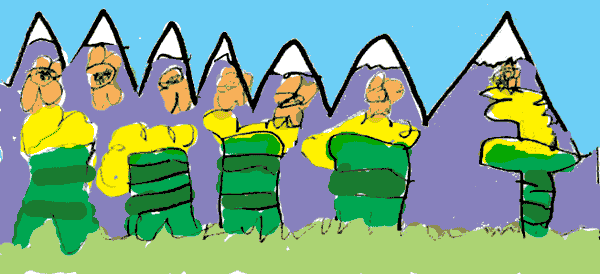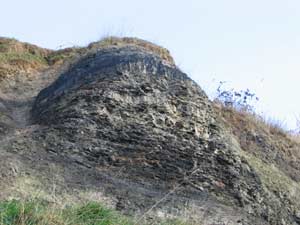
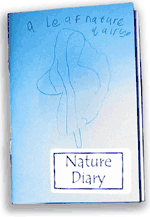 This
morning, for World Book Week, I'm leading a couple
of 45 minute workshops, encouraging children from a local school
to try keeping a nature diary. We're at Flanshaw Library,
so to start with, I take them to take a look at the city of Wakefield's
only RIGS site (a RIGS is a Regionally Important Geological Site),
the old Westgate Brickworks quarry, which is
right behind the library.
This
morning, for World Book Week, I'm leading a couple
of 45 minute workshops, encouraging children from a local school
to try keeping a nature diary. We're at Flanshaw Library,
so to start with, I take them to take a look at the city of Wakefield's
only RIGS site (a RIGS is a Regionally Important Geological Site),
the old Westgate Brickworks quarry, which is
right behind the library.
I ask them to look at the rocks - sandstone, shale
and coal - and imagine the scene 300 million years ago, with a
great river flowing from mountains to the north and primitive
trees resembling giant ferns and palms towering over us. Our part of the earth's crust was then on the equator. Giant dragonflies
zoomed around while giant amphibians (like newts
but 3 metres long) were swimming in the lagoons or hauling themselves
out on the shore.
Our part of the earth's crust was then on the equator. Giant dragonflies
zoomed around while giant amphibians (like newts
but 3 metres long) were swimming in the lagoons or hauling themselves
out on the shore.
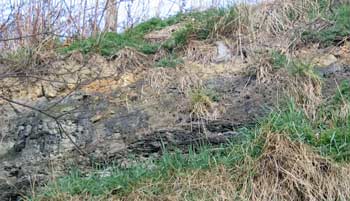
 I
point out that there was once a colliery just across the road
and a brickworks where Morrisons supermarket now stands. You can
still find old bricks with the name 'WESTGATE' stamped on them.
I
point out that there was once a colliery just across the road
and a brickworks where Morrisons supermarket now stands. You can
still find old bricks with the name 'WESTGATE' stamped on them.
I ask the children to pick up a leaf or twig as
we walk back around the library and, when we're back inside and
we've handed out the pencils, stickers and pocket-sized nature
diaries, I give them just five minutes to draw it. It's a cold
but sunny morning so next I get them to draw one of the trees
they can see through the window. 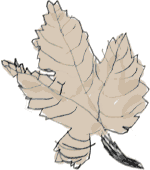 Again
for no more than five minutes.
Again
for no more than five minutes.
Finally I ask them to use their imagination to picture
what it would have looked like, right here, 300 million years
ago. 
Richard Bell, richard@willowisland.co.uk
